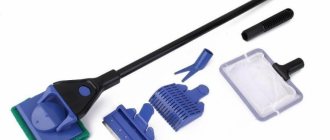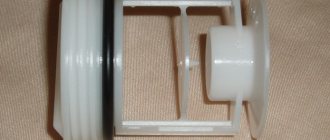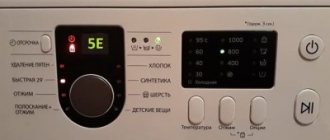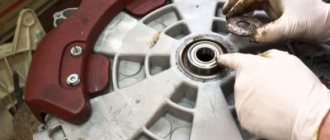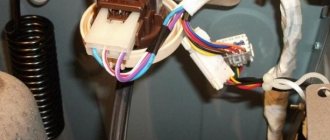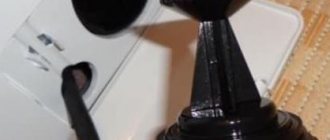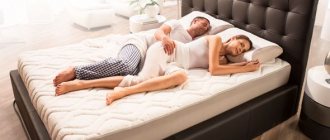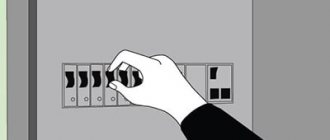An aquarium filter is one of the most important parts in a home pond, prolonging the life of waterfowl. Cleanliness depends on it, because the device provides mechanical and biological cleaning, and also saturates the water with oxygen. The installation of this device may be different, depending on its type and purpose. It is sometimes difficult for a novice aquarist to understand the instructions that come with the filter, so it is worth considering in detail the types of aquarium filters and the rules for installing them.
Types of aquarium filters
There are many manufacturers that produce filter devices of different models. There are two types of filters:
- internal;
- external.
To choose the right filter for your home pond, you should take into account the volume of the aquarium, its features and the pets and plants living in it.
Internal filter devices
Internal filters are located inside a small aquarium and are attached to suction cups.
They are the simplest type of filtering device, because the liquid penetrates inside it, is cleaned by passing through cotton wool and foam rubber, and is then discharged through the upper hoses. This type of cleaning equipment is an excellent choice for beginner aquarists. It is easy to use, easy to install and can enrich water with oxygen, since a stream of water is brought almost to the surface and absorbs oxygen from the air.
Advantages of the internal filter:
- cheap, therefore accessible to everyone;
- sold in almost every pet store;
- does not require a lot of electricity;
- performs its functions well in a small aquarium space.
Flaws:
- located in the aquarium itself, so it takes up space inside it;
- designed for small aquarium spaces;
- To clean the filter, you will need to dip your hands into the water, and this can introduce bacteria. These manipulations can lead to infection of pets.
External filter devices
External filters differ from internal filters - they are expensive and the method of installation (they are located outside the aquarium).
Thanks to this equipment, even large areas of water can be easily cleaned. Advantages of an external filter:
- filters well, even over a large area of the aquarium;
- filter materials are easily replaced;
- has additional compartments for fillers;
- They are located outside, so they do not occupy aquarium space.
Disadvantages of external filters:
- bulky, therefore visible to others;
- expensive;
- If the device is operating at full power, then you need to put a mesh on the inlet tube, because the device can suck in fry.
The sequence of installing internal or external filters is different, but installing them yourself, without calling professionals, is still possible!
What else to look for when choosing
When purchasing a main-line filter, you need to consider several important parameters, which include:
- Bandwidth. Mainline treatment systems can filter from 20 to 50 l/min. Each family has its own volumes of water consumption, which are taken into account when selecting a device.
- Reduced water pressure after the filter. Particular attention to this parameter should be paid to the inhabitants of the upper floors, where the pressure in the pipes may already be weak. If there is insufficient pressure in the system, individual household appliances, such as water heaters, simply will not work. Therefore, you should take this characteristic into account when purchasing. Another solution to the problem is to install a pump after the filter that increases the pressure in the system.
- Compactness. Before purchasing, you need to take measurements to ensure that the selected device will fit in the space allocated for it. After all, sometimes meters, filters, pressure reducers and taps need to be located in a rather cramped space.
USEFUL INFORMATION: Filter for softening tap water: purifying hard water
- Composition of fine cleaning cartridges. There are no universal cleaning elements that capture all types of impurities. Before purchasing a filter, it is advisable to conduct a chemical analysis of the water in order to know its composition and select a suitable purification system. For residents of apartment buildings, such an analysis will cost very little if they contribute.
- Manufacturer. In order for the filter to work for a long time and efficiently, it is worth choosing products from trusted brands. Aquaphor is also well known on the Russian market.
Recommendations before installation
- Before installing the device, you should fill at least 50% of the aquarium with liquid, because cleaning equipment is used only when filled.
- Before assembly, you should check that all parts are perfectly dry.
- As for the internal filter, it should be located approximately 2-4 cm below the surface of the water, and if the aquarium space allows, then lower it even lower, but so that it does not reach the bottom. Be sure to check the filter every day. It must be completely covered with liquid, and it tends to evaporate.
- The device may only be placed in liquid when it is turned off.
- A special air outlet tube is brought out (it is advisable to fix it).
- After these manipulations, you can plug the device into a power outlet. If a current appears, it means the device is connected correctly. It is not recommended to fix the wire from the filtering equipment, but leave it in a free position.
There is also a special valve on the cleaning filter, with which you can regulate the direction of movement and the pressure of the purified liquid. Before using it, you must unplug the power cord from the outlet.
How to install an internal filter
Placing an indoor device inside a home pond does not require special skills or a lot of time.
Even a novice aquarist can easily cope with this task. To install filtering equipment you will need:
- Select a filter in the store. If the aquarist doubts the correct choice, then it is better to consult the seller.
- Unpack the device and carefully read the operating instructions.
- Move the fish to another container, change the liquid in the home pond, filling it to the top.
- Install the device inside so that the liquid covers it from above, at least 20 mm. (preferably more than 3 cm).
- Secure it to the walls using Velcro, hooks or suction cups included in the kit.
- Make sure that the drainage tube comes to the surface and fix it.
- Connect the device to the power supply.
- Check the quality of the device functionality. To do this, you need to bring your hand to the outlet, feel the stream of water, if there is one, then the filter is connected correctly.
- After checking the operation of the equipment, you can release the fish back.
After these steps, the filtering equipment can work continuously, however, in order for the aquatic inhabitants to be comfortable and the device to perform its functions efficiently, its performance should be regularly checked and cleaned from blockages.
See how to disassemble, assemble and install the internal filter:
How to install an external filter
Each manufacturer designs cleaning devices differently, so the assembly procedure may vary slightly. However, there are some installation steps that must be performed, regardless of the manufacturer, model, brand, etc.:
- Before installation, you will need to prepare a soft stand, rags, and a flashlight.
- Unpack the device and examine its contents.
- Read the instructions and assemble the device as described. The taps on the device must be closed.
- Install a long tube with a curve (for collecting liquid) and lower it inside the aquarium. Also install a short curved tube at the other end of the aquarium to drain water.
- The outlet tube must be connected to the device, closed and filled with water, and then connected to the aquarium drainage system.
- Open the taps of the filtering equipment and connect to the power supply. If connected correctly, the movement of water inside the aquarium will be noticeable to the naked eye.
Note. Sometimes it happens that the water stops flowing shortly after installation, and this worries many aquarists. In order to correct the situation, you will need to turn off and then turn on the device again. If nothing has changed, it means that there is an air lock inside the tubes; to remove it, you will need to drain the water in the hoses and refill them.
Installing an external or internal filter for an aquarium is an irreplaceable procedure, especially if it is home to whimsical pets. Even a novice aquarist can handle equipment intended for indoor use, but this type of equipment is used only for aquariums with a small volume. And external devices are most often used by experienced owners of home ponds, but they are much more difficult to install.
See how to install an external filter in an aquarium:
Design and types of main filters
Mainline devices are installed at the entrance of the pipeline to the apartment and purify all the water consumed in it.
Professionals recommend making additional wiring at the place where the filter is inserted into the pipe, equipped with a system of ball valves. This will allow in emergency cases, for example, in the event of a breakdown or clogging of the filter device, to release water directly, bypassing it.
There are several types of main filters. Depending on the number of degrees of purification, they are divided into the following types:
- Single-stage, designed for rough cleaning of sand, rust and other mechanical impurities. Such filters are called mud filters. They are designed simply: it is a flow-through vertical flask, in which a metal mesh serves as a cleaning element. The device can contain several grids with cells of different sizes, which improves the quality of cleaning. The service life of such filters is practically unlimited: it is enough to remove and wash the filter element from time to time. There are also single-stage models with replaceable cartridges.
USEFUL INFORMATION: Cartridge filters for water purification: types, types and sizes
Dirt filters are necessarily present in more complex systems with two or three stages of cleaning. Mechanical impurities are the main problem with worn-out water pipelines in the post-Soviet space. Without solving this problem, it is impossible to guarantee the normal operation of household appliances and the fine filter system.
- Two-stage. The main function of the second stage is the removal of microscopic suspended matter and chlorine used for disinfection at treatment stations. The cartridges use fillers made from sorption materials.
- Three-stage, where the third stage is responsible for softening the water and removing iron impurities from it. The best option for a city apartment.
There are filtering devices designed for hot and cold water and differing in housing material. Devices made of special plastic or stainless steel can successfully withstand high temperatures.
Remember that hot water filters can be installed on the cold water pipe, but replacing them back is strictly prohibited.
Read more about mainline filters here.
